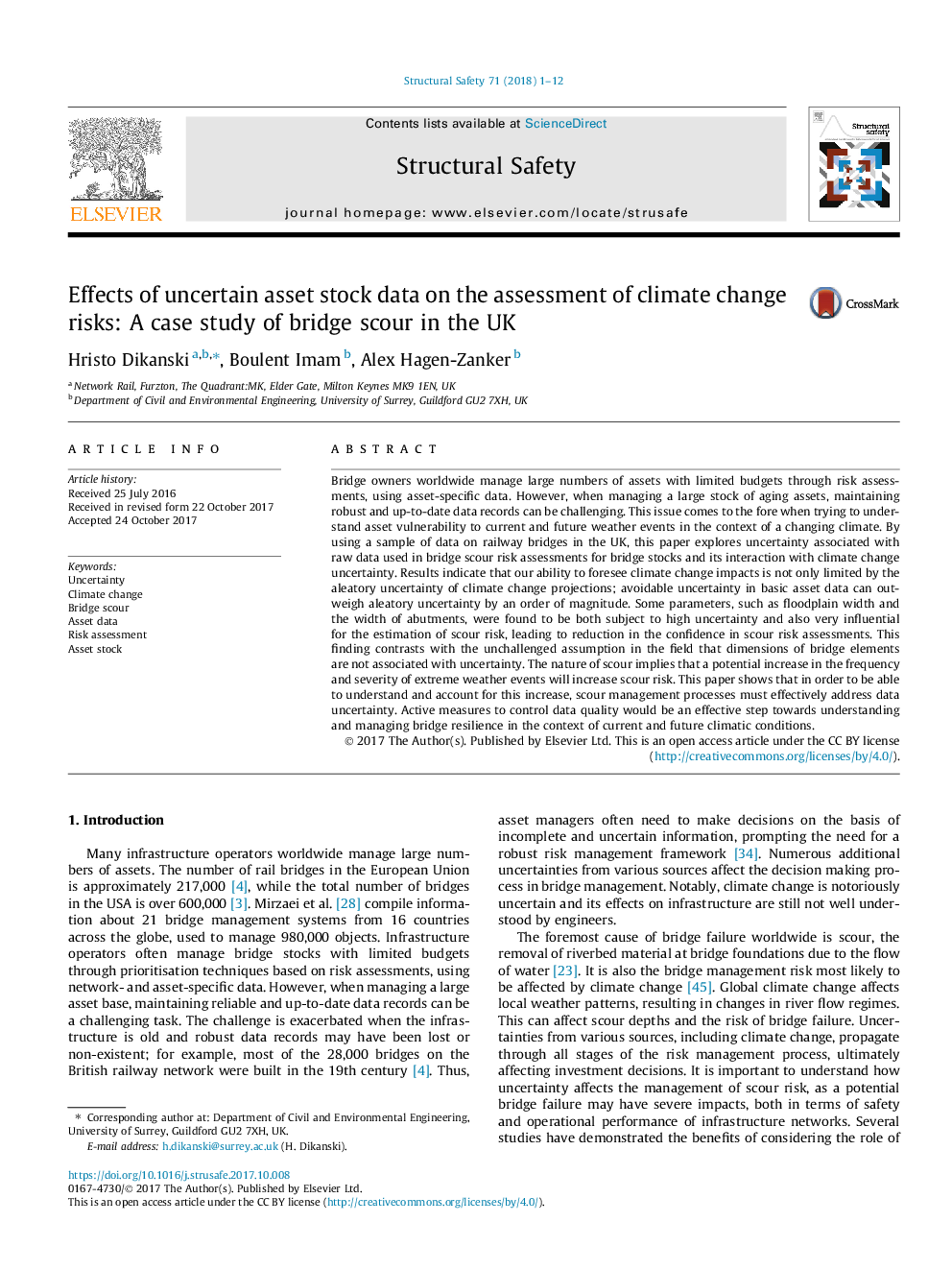| Article ID | Journal | Published Year | Pages | File Type |
|---|---|---|---|---|
| 6774068 | Structural Safety | 2018 | 12 Pages |
Abstract
Bridge owners worldwide manage large numbers of assets with limited budgets through risk assessments, using asset-specific data. However, when managing a large stock of aging assets, maintaining robust and up-to-date data records can be challenging. This issue comes to the fore when trying to understand asset vulnerability to current and future weather events in the context of a changing climate. By using a sample of data on railway bridges in the UK, this paper explores uncertainty associated with raw data used in bridge scour risk assessments for bridge stocks and its interaction with climate change uncertainty. Results indicate that our ability to foresee climate change impacts is not only limited by the aleatory uncertainty of climate change projections; avoidable uncertainty in basic asset data can outweigh aleatory uncertainty by an order of magnitude. Some parameters, such as floodplain width and the width of abutments, were found to be both subject to high uncertainty and also very influential for the estimation of scour risk, leading to reduction in the confidence in scour risk assessments. This finding contrasts with the unchallenged assumption in the field that dimensions of bridge elements are not associated with uncertainty. The nature of scour implies that a potential increase in the frequency and severity of extreme weather events will increase scour risk. This paper shows that in order to be able to understand and account for this increase, scour management processes must effectively address data uncertainty. Active measures to control data quality would be an effective step towards understanding and managing bridge resilience in the context of current and future climatic conditions.
Related Topics
Physical Sciences and Engineering
Engineering
Civil and Structural Engineering
Authors
Hristo Dikanski, Boulent Imam, Alex Hagen-Zanker,
